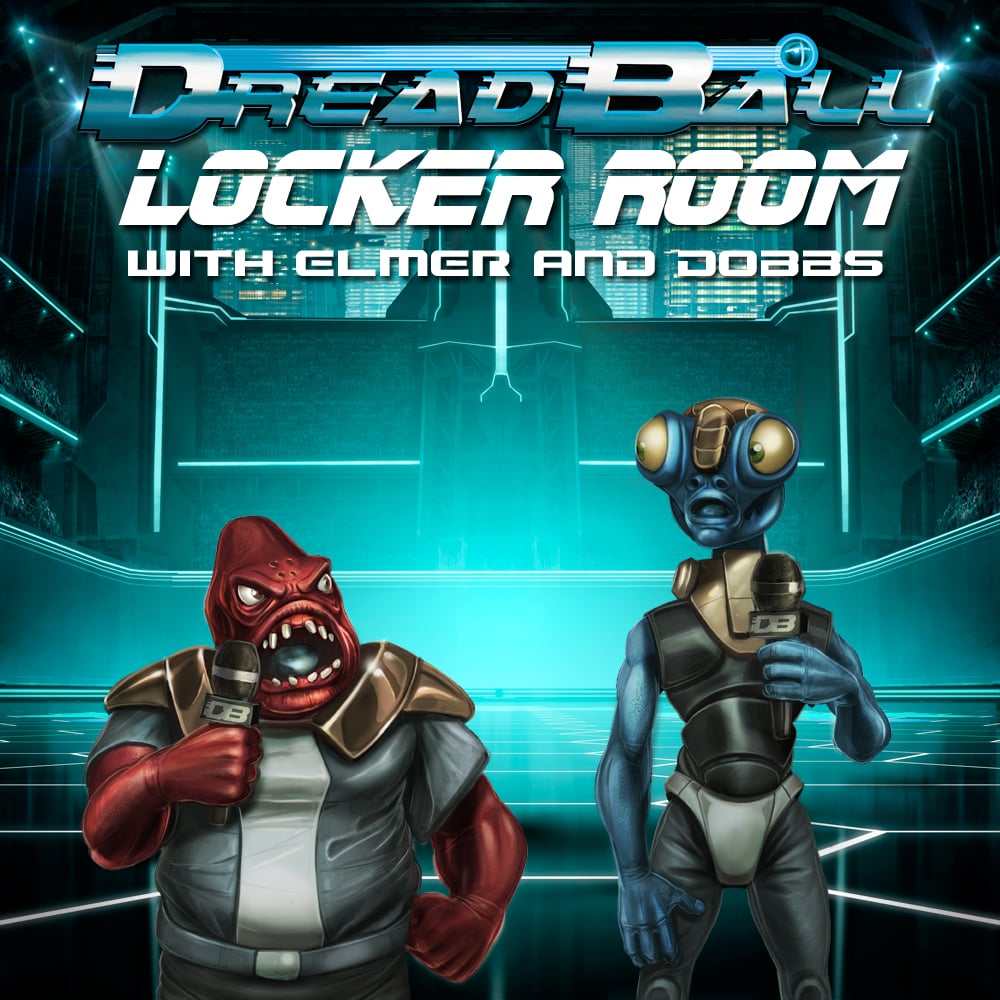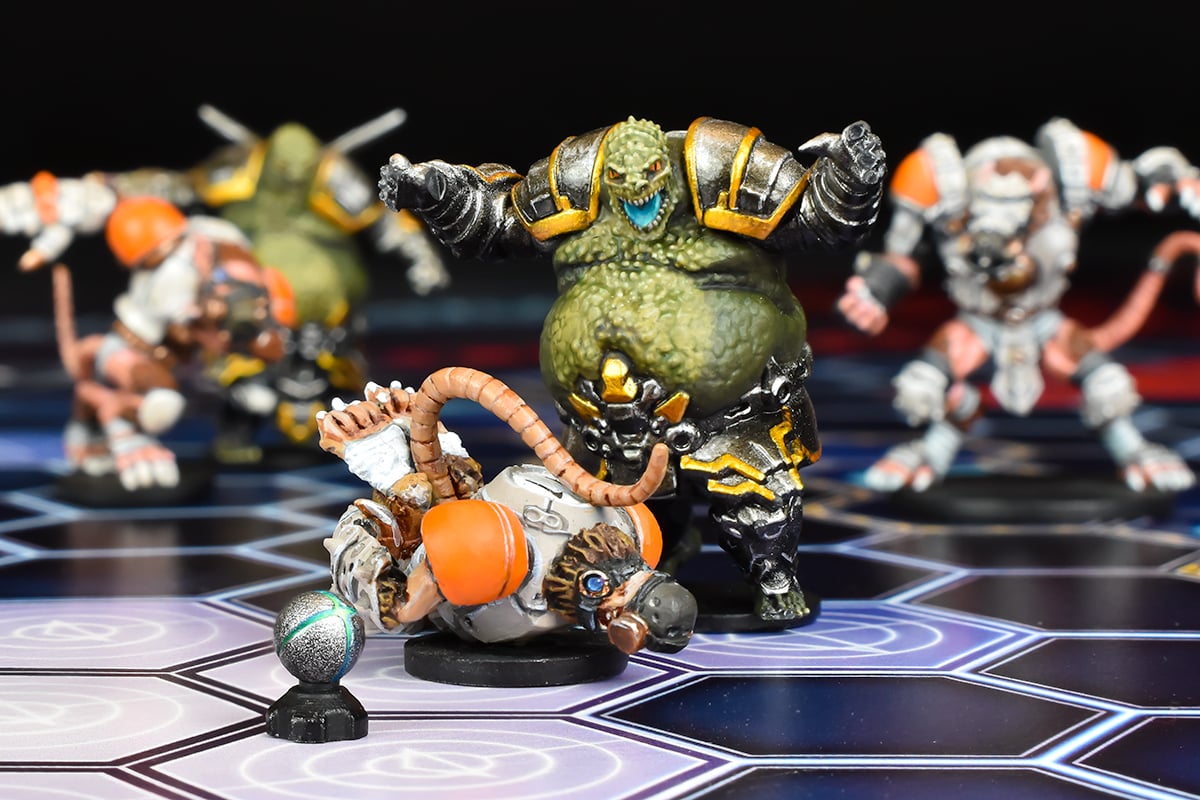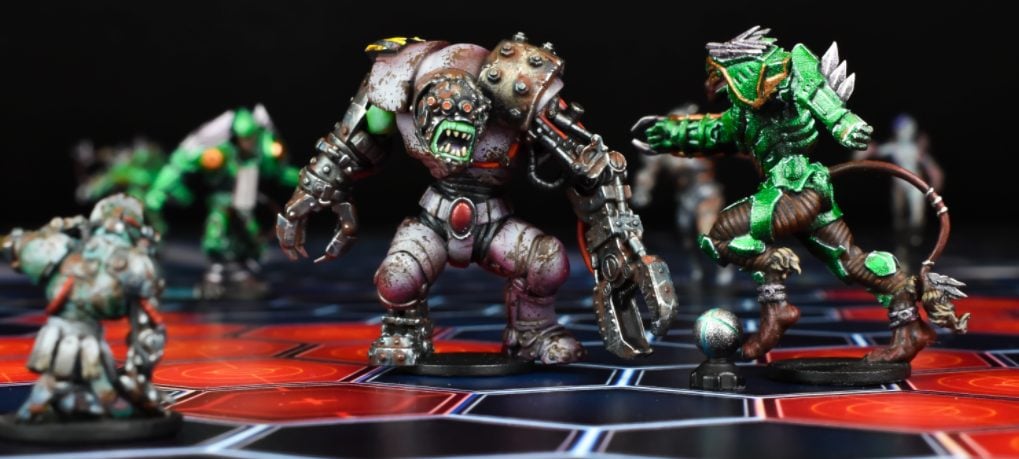DREADBALL LOCKER ROOM: Slamming Tips and Tactics
1st Mar 2018
Rob Burman

"... and we're back. Thanks for joining us folks. Today's DreadBall Locker Room is looking at the crowd's favourite: Slamming."
"Wow, the timing couldn't be better Elmer. Today's the anniversary of the time Buzzcut Slammed a goblin so hard, the goblin's head fell off."
"It was his helmet Dobbs, not his head."
"Head. Helmet. It's all the same. I'll miss that little guy." *sound of sobbing and nose being blown loudly*
"He's not dead Dobbs. He's Gary, our sound designer. He just retired from DreadBall."
"Dead. Alive. Working as a sound designer. It's all the same."
"On that bombshell, let's get on with the show folks."
Slamming is one of the key elements of DreadBall. Although glorious passes may be the eye-catching, fancy part of DreadBall, Slamming is the crowd-pleasing, gritty side of the game. Slamming is a little like blocking in American Football. You don't have to go for the player holding the ball (although that can be advantageous). Instead you can use Slams to clear opposing players out the way, ready for your Striker to run up the pitch and score that all-important Strike.
A Slam action can only be performed by a Jack or Guard. The standard Slam is a three-dice opposed roll (using the Strength stat) against a rival player. Before a Slam Action a player can make a full run move, and will actually get a bonus dice for moving before Slamming. A change in Second Edition means that Jacks can now make a full run before Slamming, unlike the previous edition where they could only move one Hex. What's more, Guards get a bonus dice just for being tough! This means a Guard who runs into a Slam will roll five dice. Ouch! Remember that sixes also explode, so there's the opportunity to roll even more dice.

So, while the attacking player is trying to knock someone's head off, what can the defending player do? Well, they have two options:
Slam back - sometimes you'll want to stand your ground and try to beat your opponent at their own game. Slamming back is the same as a normal slam and also uses the Strength stat. Guards get their bonus dice as normal.
Dodge - if you're a Striker or Jack, sometimes it's better to try and dodge the blow. Agile teams like the Ninth Moon Tree Sharks excel in avoiding Slams from the enemy. Unlike Slamming back, a Dodge is a standard three-dice Agility test, so players will be using their Agility stat, rather than their Strength stat. This means the Ninth Moon Tree Sharks would be Dodging on a 3+. Pretty tasty!
Once both coaches have decided what they're going to do, they roll their dice and compare the number of successes. If the Slam wins, the winner turns to face the loser (if they weren't already) and the loser is pushed back into a vacant hex. The Winner may then follow up into the hex the loser has just left.

If the Slam doubles, the loser is pushed back as above and is then knocked down. If they were holding the ball, it's immediately dropped and is scattered. They must then make an Armour Check to see if they're injured by the Slam (each success by the winner is counted as a potential wound). Normally this is a three-dice Armour check (Guards actually get four dice) and each success cancels out a wound. For example, if the winner had scored four successes and the loser has only scored two successes, that is potentially two wounds. If any wounds remain following the Armour Check, the player is placed in the section of the sin bin equal to the damage. This is the number of rushes (turns) they require to cover. If there are four wounds remaining then the player is Seriously Injured and is removed for the rest of the game.
If the Dodge wins, the winning player may face any direction. If the Dodge doubles, the winner can move one hex for free.
TALKING TACTICS - SLAMMING FROM BEHIND
In the above examples we assumed the Slamming player was slamming into the front arc of the defending player. However, if you can position yourself correctly, Slamming a player in their rear arc can be extremely advantageous. Firstly a player being Slammed from behind cannot Slam Back and must dodge. This is perfect for taking out those strong players who are great at Slamming but weak at Dodging. For example, the Orc Guard in the New Eden Revenants has a Strength stat of 3+ but an Agility stat of 5+. Slam him from behind and he's in for a world of hurt.
What's more, a new addition for Second Edition sees players losing a dice when Dodging an attack from the rear. This makes sense as they're caught off guard by the attack. That means the Orc Guard would be dodging on a 5+ with only two dice.
TALKING TACTICS - GANGING UP
Another useful tactic is ganging up on your potential targets. You see, for each friendly player that has a threat hex on the defending player, they'll lose a dice when Slamming back or Dodging. Let's go back to that poor Orc Guard. If he was Slammed from behind, while also in the threat hex of an opposing player, he would only get one dice to Dodge. As such there's a potential for a running Guard to be rolling five dice against just one - and if you add some exploding sixes into the mix, it's probably game over.
Well, that’s it for today’s look at Slamming. We’ll be back soon for another exciting edition of the DreadBall Locker Room.
